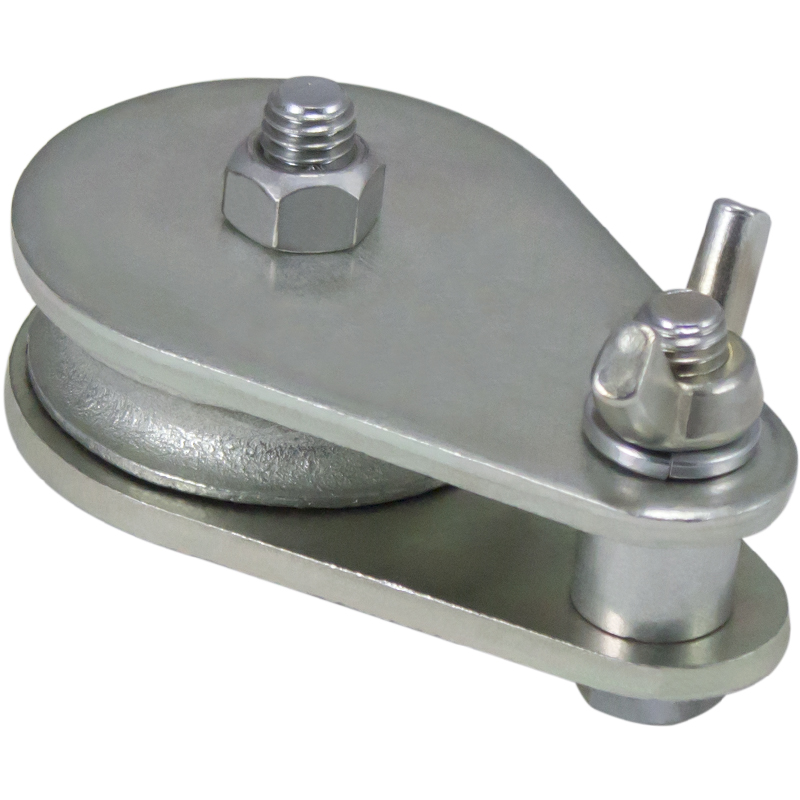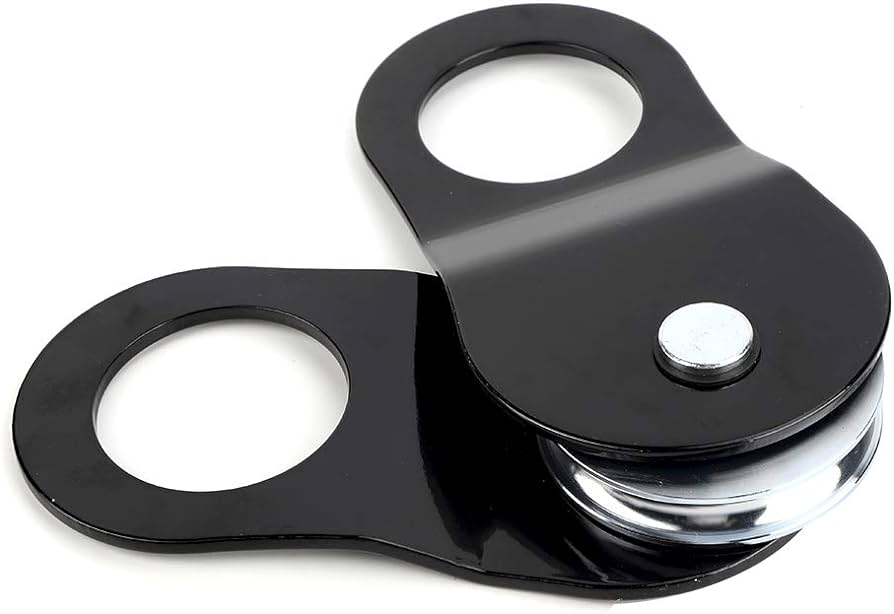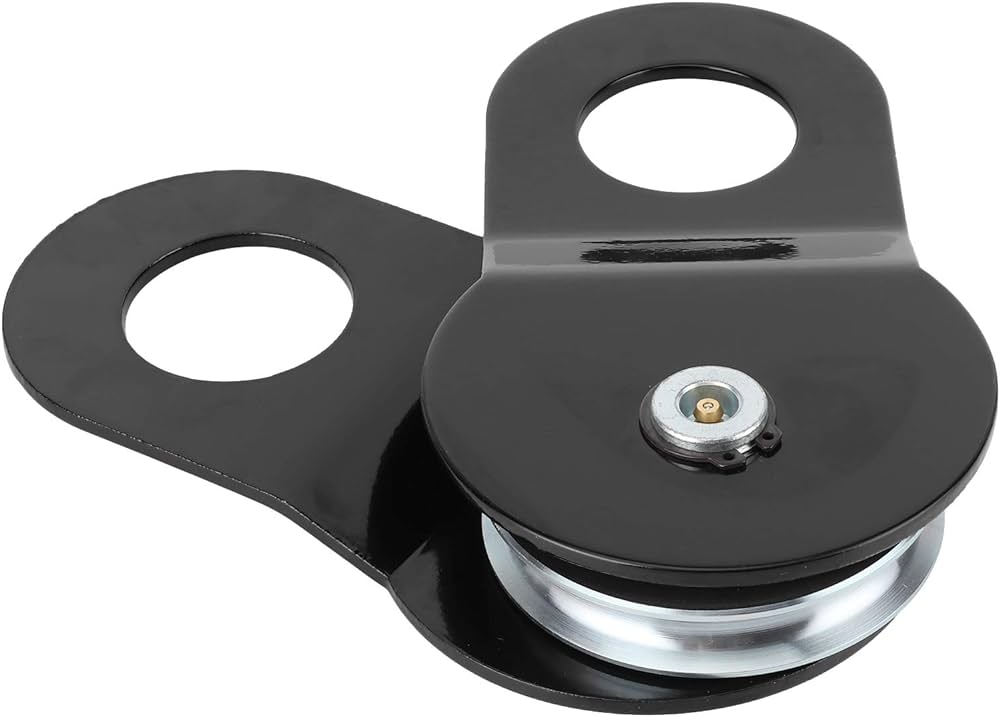Product Description
Hot Sale Head Wheel Sheave/ Sheave Pulley for Mine Hoist
Product Introduction
Xihu (West Lake) Dis. wheel device can transport the whole under the premise of swimming round and fixed wheel adopts integral cast joint structure, wheel hub, wheel rim for cast steel materials, spoke for the channel steel, after welding the whole annealing process again.
Considering the replacement bearing maintenance convenient, leave replace bearing remove space, guide wheel device structure adopted eccentric layout.
Xihu (West Lake) Dis. shaft using middle carbon alloy steel forging whole, adopting the structure of the cast joint pulley, equipped with PVC or nylon liner, protect the wire rope.
Imported or domestic spherical roller bearings, also can install bearing temperature measuring element.
In order to prolong the service life of wire rope, rim inside wedge liner with wear-resisting, withstand voltage, using D660 (1571) or nylon liner.
1) eccentric layout: on 1 side of a winding wheel have replaced bearing dismantling space, can not remove the pulley mechanism, only for bearing maintenance and replacement.
2) symmetry layout: relative with 4 wheels on both sides of the 2 bearing seat is symmetrical, but need to replace the bearing shell, only to remove the pulley mechanism.
sheave pulley and the common malfunction and technical guide wheel
1) to the problem of old structure pulley sliding bearing to burn tile should improve lubrication way; Because of the pulley is installed on the derrick, daily maintenance inconvenience, should add temperature alarm device, so as to timely maintenance to prevent the tile burning failure, or the original sliding bearing replacement into rolling bearing structure
2) for old structure pulley rope groove without liner, can no longer add padding on the original rope groove, need to change a gasketed pulley, adjacent assembly size can remain motionless, and installation
3) for mountain transportation difficulties or have some difficulties in roadway transportation in underground mine, the pulley is (guide wheel) change the structure into 2 or 4 and a half of head sheave.
/* January 22, 2571 19:08:37 */!function(){function s(e,r){var a,o={};try{e&&e.split(",").forEach(function(e,t){e&&(a=e.match(/(.*?):(.*)$/))&&1
| Type: | Electric Winch |
|---|---|
| Driven Type: | AC |
| Speed: | Fast |
| Reel Number: | 1 / 2 |
| Running Mode: | Stationary |
| Certification: | ISO 9001 |
| Customization: |
Available
| Customized Request |
|---|

How are winch pulleys integrated into industrial and construction equipment?
In industrial and construction equipment, winch pulleys are commonly integrated to provide lifting and pulling capabilities. Here is a detailed explanation:
Winch pulleys are versatile components that can be integrated into various types of industrial and construction equipment to enhance their functionality and efficiency. They are typically used in conjunction with winches, cables, and ropes to facilitate the movement of heavy loads, provide mechanical advantage, and enable controlled lifting or pulling operations. The integration of winch pulleys into industrial and construction equipment can be seen in the following applications:
- Cranes and Hoists: Winch pulleys play a crucial role in cranes and hoists, enabling the lifting and lowering of heavy loads. They are often mounted at strategic points within the crane or hoist system, allowing the cables or ropes to change direction and provide the necessary mechanical advantage. Winch pulleys help distribute the load, reduce the effort required, and ensure smooth and controlled movement of the lifted loads.
- Material Handling Equipment: In industrial settings, winch pulleys are integrated into material handling equipment such as forklifts, conveyor systems, and overhead cranes. They assist in moving materials, goods, or components within factories, warehouses, or construction sites. Winch pulleys are used to guide and redirect cables or ropes, enabling precise positioning and efficient transfer of loads.
- Construction Machinery: Winch pulleys are commonly found in construction machinery, including excavators, bulldozers, and backhoes. They are utilized for tasks such as lifting heavy objects, pulling loads, or operating attachments. Winch pulleys allow the machinery to exert greater force, improve control, and perform tasks that require substantial power or precision.
- Vehicle Recovery Systems: Winch pulleys are essential components in vehicle recovery systems, such as those used in off-road vehicles, tow trucks, or recovery vehicles. They are used to redirect the winch cable's direction, providing a mechanical advantage and facilitating the safe recovery of stuck or immobilized vehicles. Winch pulleys help distribute the load and increase pulling capacity, allowing for effective vehicle extraction.
- Elevators and Lifts: Winch pulleys are integral to elevators and lifts, ensuring smooth and controlled vertical movement. They are used to guide and redirect the cables or ropes connected to the elevator car or lift platform. Winch pulleys help distribute the load evenly, minimize friction, and provide the necessary mechanical advantage to transport people or goods between different levels.
- Tensioning and Rigging Systems: Winch pulleys are employed in tensioning and rigging systems used in construction, bridge building, and other structural projects. They assist in applying tension to cables or ropes, adjusting the tension levels, and maintaining stability and safety in various applications. Winch pulleys in tensioning systems help distribute the load evenly and ensure proper alignment and tensioning of cables.
The integration of winch pulleys into industrial and construction equipment requires careful engineering and consideration of factors such as load capacity, operational requirements, safety regulations, and environmental conditions. Manufacturers of industrial and construction equipment design and incorporate winch pulleys into their machinery to provide reliable and efficient lifting and pulling solutions for a wide range of applications.

Can winch pulleys withstand harsh environmental conditions?
Winch pulleys are designed to withstand various environmental conditions encountered in marine and boating applications. Here is a detailed explanation:
Winch pulleys are typically constructed using durable materials that are chosen for their strength, corrosion resistance, and ability to withstand harsh environmental conditions. While the specific capabilities of winch pulleys may vary depending on their design, quality, and intended use, they are generally built to endure the following challenging conditions:
- Corrosion Resistance: Winch pulleys are often exposed to corrosive environments, such as saltwater or high humidity. To combat corrosion, many winch pulleys are made from materials like stainless steel, aluminum, or high-quality plastics that are resistant to rust and degradation. These materials help ensure the longevity and performance of winch pulleys in marine and boating applications.
- UV Resistance: Winch pulleys used in open-air or exposed locations are designed to withstand ultraviolet (UV) radiation from the sun. UV-resistant coatings or materials are applied to protect the pulleys from sun damage, such as fading, cracking, or degradation. This UV resistance helps maintain the structural integrity and functionality of winch pulleys over extended periods of exposure to sunlight.
- Extreme Temperatures: Winch pulleys are engineered to operate in a wide range of temperatures. They are designed to withstand both high and low temperature extremes without compromising their functionality. The materials used in winch pulleys are selected to remain stable and perform optimally within the expected temperature ranges encountered in marine and boating environments.
- Water Resistance: Winch pulleys are often exposed to water, whether from rain, splashing, or immersion. They are designed with features that provide water resistance and prevent water intrusion into critical components. Sealed bearings, water-resistant seals, and protective coatings help ensure that winch pulleys continue to operate smoothly and reliably even in wet conditions.
- Vibration and Shock Resistance: Winch pulleys may experience vibrations and shocks during operation, especially in rough sea conditions or when subjected to heavy loads. To withstand these dynamic forces, winch pulleys are designed with robust construction and components that can absorb shocks and minimize vibrations. This helps prevent premature wear, damage, or failure of the winch pulleys.
- Chemical Resistance: In certain marine and boating applications, winch pulleys may come into contact with chemicals, fuels, or cleaning agents. To ensure their durability, winch pulleys are often made from materials that exhibit resistance to common chemicals and solvents. This chemical resistance helps protect the pulleys from damage or degradation when exposed to potentially corrosive substances.
While winch pulleys are built to withstand harsh environmental conditions, it is important to note that their performance and durability can still be influenced by the severity and duration of exposure. Regular maintenance, cleaning, and following the manufacturer's guidelines for usage and storage can help maximize the lifespan and reliability of winch pulleys in demanding marine and boating environments.

What is a winch pulley, and how is it used in winching systems?
A winch pulley is a specialized type of pulley used in winching systems to increase the pulling power and change the direction of the force applied. Here is a detailed explanation of what a winch pulley is and how it is used in winching systems:
A winch pulley, also known as a snatch block or a pulley block, is a device that consists of a grooved wheel or sheave mounted on a frame or housing. The sheave has a V-shaped groove or multiple grooves that guide the winch cable or rope. The frame of the pulley block typically includes a hook or an attachment point for connecting to an anchor or a load.
In winching systems, a winch pulley is used to increase the pulling power and change the direction of the force exerted by the winch. When the winch cable or rope passes through the grooved sheave of the pulley block, it changes the line of pull and multiplies the pulling force. This mechanical advantage allows the winch to exert greater force, making it easier to move or lift heavy loads.
The primary purpose of using a winch pulley in a winching system is to achieve a higher pulling capacity than what the winch alone can provide. By redirecting the cable or rope through the pulley block, the load can be distributed over two or more lines, effectively reducing the strain on the winch and increasing the overall pulling capacity. This is particularly useful in situations where the load is exceptionally heavy or when additional pulling power is required.
Furthermore, a winch pulley can be used to change the direction of the pulling force. By attaching the pulley block to an anchor or a fixed point and routing the cable or rope through the sheave, the winch can pull the load from a different angle. This versatility allows for more efficient and controlled winching operations, especially in situations where a direct line of pull is not possible or when the load needs to be guided around obstacles.
Winch pulleys are designed to be strong, durable, and able to withstand the high forces and loads encountered in winching operations. They are commonly made from robust materials such as steel or high-strength alloys to ensure reliability and safety during heavy-duty applications.
In summary, a winch pulley is a specialized pulley used in winching systems to increase pulling power and change the direction of the force applied. It provides a mechanical advantage by redistributing the load and multiplying the pulling force, making it easier to move heavy loads and navigate challenging winching scenarios.


editor by CX
2024-04-08